Discover 20 hidden attractions, cool sights, and unusual things to do in New Brunswick (United States). Don't miss out on these must-see attractions: Rutgers Gardens, Geology Hall, and State Theatre. Also, be sure to include Voorhees Chapel in your itinerary.
Below, you can find the list of the most amazing places you should visit in New Brunswick (New Jersey).
Table of Contents
Rutgers Gardens

Botanical garden in North Brunswick Township, New Jersey. Rutgers Gardens is the official botanic garden of Rutgers University, located on the outskirts of Cook Campus, at 112 Ryders Lane, North Brunswick, New Jersey. The grounds include 60 acres of designed beds, specialty gardens, tree and shrub collections, lawns, and walking paths, as well as the adjoining 70-acre Frank G. Helyar Woods. A place of learning and beauty, Rutgers Gardens strives to provide a fun, educational, and engaging place for students, faculty, and the community to enjoy the natural world. The gardens are open year-round, without fee, and feature horticultural collections arranged in garden settings. In 2017 it was granted landmark status by the American Society for Horticultural Science.[1]
Address: 112 Ryders Lane, New Brunswick
Geology Hall
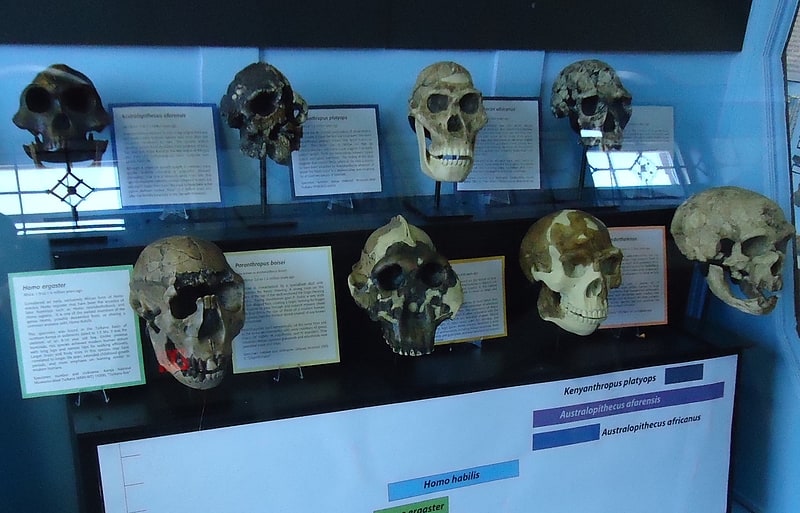
Museum in New Brunswick, New Jersey. Geology Hall, formerly Geological Hall, also known as the Rutgers Geology Museum, is a building located in the historic Queens Campus section of Rutgers, The State University of New Jersey's College Avenue Campus in New Brunswick, New Jersey, United States.
When Rutgers was selected as New Jersey's only land grant college in 1864, the college began to expand its curriculum to include instruction in science and agriculture. Rutgers president William Henry Campbell raised funds to construct a building to accommodate this expansion, and Geology Hall, designed by architect Henry Janeway Hardenbergh, was built in 1872.
As part of the Queen's Campus historic district, Geology Hall was included on the New Jersey Register of Historic Places and the National Register of Historic Places in 1973. At present, the building houses administrative offices and the university's geological museum. The museum, the oldest collegiate geology museum in the United States, was founded by state geologist and Rutgers professor George Hammell Cook in 1872. Its exhibits showcase the natural history of New Jersey; focusing geology, paleontology, and anthropology. Exhibits include fluorescent zinc minerals from Franklin and Ogdensburg, a mastodon from Salem County, a dinosaur trackway discovered in Towaco, and a Ptolemaic era Egyptian mummy.[2]
Address: 85 Somerset St, 08901 New Brunswick (New Brunswick)
State Theatre
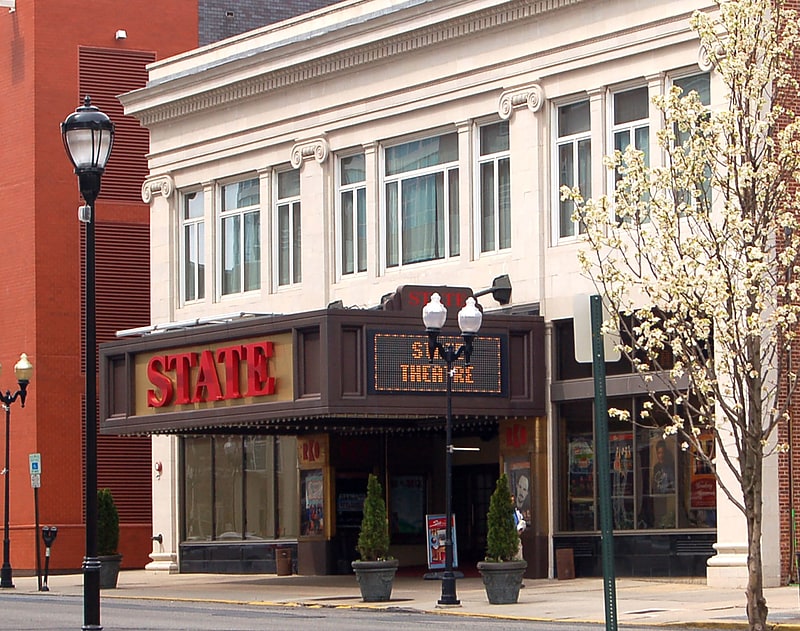
Theater in New Brunswick, New Jersey. State Theatre New Jersey is a nonprofit theater, located in New Brunswick, New Jersey. It has seating for 1,850 people. Designed by architect Thomas W. Lamb in 1921, it is one of the oldest theaters in the State of New Jersey.[3]
Address: New Brunswick, 15 Livingston Ave
Voorhees Chapel

Voorhees Chapel is one of two chapels on the campus of Rutgers, The State University of New Jersey in New Brunswick, New Jersey. Built in 1925 with a donation from Elizabeth Rodman Voorhees, wife of Rutgers trustee Ralph Voorhees, the chapel once served the community of Douglass College. Douglass, founded the New Jersey College for Women, was the women's residential college at Rutgers.
The chapel is an example of Georgian period Colonial Revival architecture in the tradition of English architect Sir Christopher Wren.
The chapel houses a large mechanical-action pipe organ built by the Karl Schuke Berliner Orgelbauwerkstatt. The instrument has 3-manuals & pedals, 41 independent registers, 41 speaking stops, and 65 ranks.[4]
Address: 5 Chapel Dr, New Brunswick (New Brunswick)
Christ Church
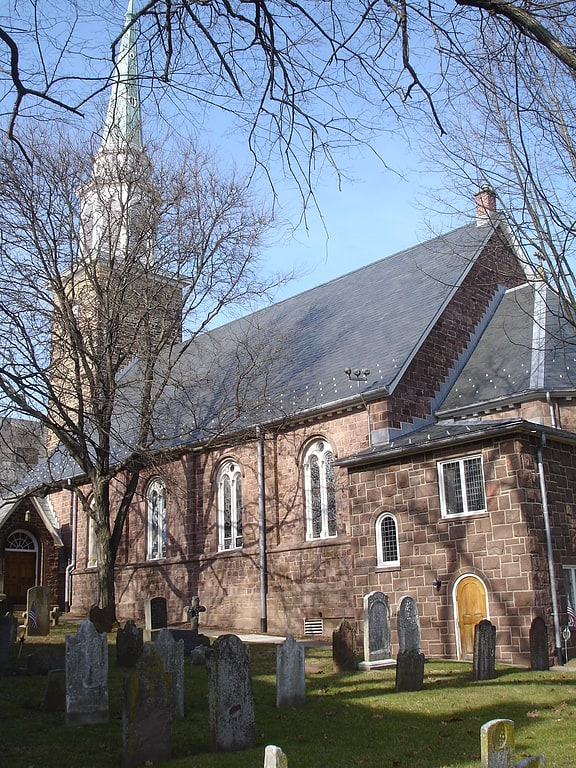
Episcopal church in New Brunswick, New Jersey. Christ Church or Christ Episcopal Church is a historic Episcopal church in New Brunswick, Middlesex County, New Jersey.[5]
Address: 5 Paterson St, 08901 New Brunswick (New Brunswick)
Metlar–Bodine House
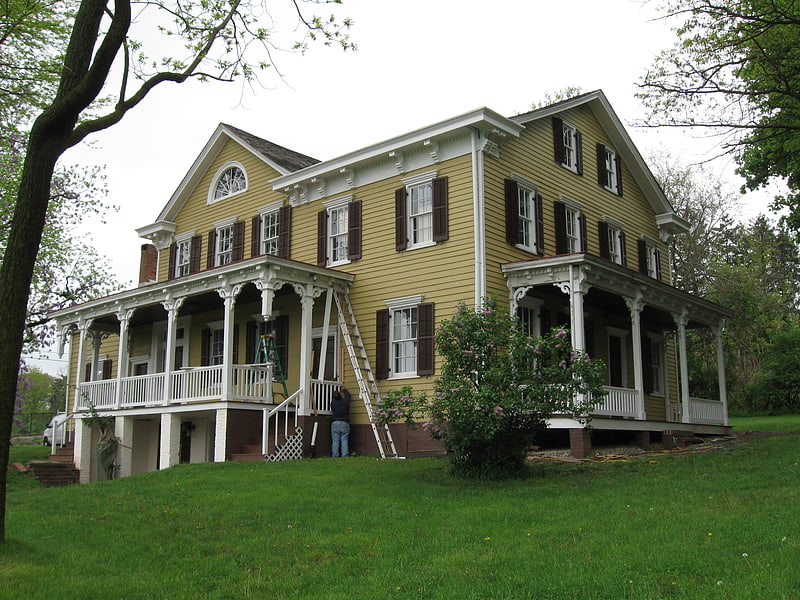
The Metlar House, also known as the Knapp House, the Bodine House, or the Metlar–Bodine House, is an historic house, now museum, located along River Road in Piscataway, New Jersey. It is also believed to be haunted. In 2003 a fire badly damaged the house. The museum has undergone major renovations over the past decade and, as of Summer 2014, is once again open to the public.
The Metlar–Bodine House's "Red, White, and Boom" Madeira wine tasting event on July 6, 2014, kicked off its campaign to raise money to build a new educational wing to house the historically significant Ross Hall Wall.
In July 1778, George Washington headquarters were at Ross Hall and his 11,000 patriots camped along the Raritan River in Piscataway. It was there that General Washington wrote the first order for the United States Army to celebrate the 4th of July – a tradition that continues to this day. The troops were ordered to march across the river on Landing Lane Bridge, line the banks of the Raritan in New Brunswick, and shoot their rifles down and up the line in the first organized salute to the nation's independence. They were then given an extra ration of rum and that evening the General had a party for officers (including Alexander Hamilton, the Marquis de Lafayette and Baron Von Stuben) and their ladies at Ross Hall. The building was destroyed in the 1960s but because of its significance, a parlor wall was saved and was exhibited at the New Jersey Historical Society until it was given to the Township and the Metlar–Bodine House in 2000.
Currently, the parlor wall is dismantled and stored in a large warehouse owned by Piscataway Township. The wall must be restored and relocated to a facility that is climate controlled and protected. It is estimated that the wall's restoration and an addition to the Metlar–Bodine House will cost close to $1 million.[6]
Address: 1201 River Rd, New Brunswick
William the Silent

Statue by Louis Royer and Toon Dupuis. A bronze statue of William the Silent was installed in 1928 on the Voorhees Mall section of Rutgers University's College Avenue Campus in New Brunswick, New Jersey. It is along Seminary Place, a street at the western end of the Voorhees Mall, and near several academic buildings, including the university's Graduate School of Education, Van Dyke Hall, and Milledoler Hall.
The statue is of William I, Prince of Orange (1533–1584), an early leader of the Dutch revolt against Habsburg Spain which led to the Netherlands' independence in 1648. It was donated by Dr. Fenton B. Turck to commemorate the university's Dutch heritage. Turck, with the assistance of railroad executive and Rutgers alumnus Leonor F. Loree, arranged the anonymous donation through the Holland Society of New York.
The statue has continued to be part of student life as the Voorhees Mall had been the site of student and community events, including graduation ceremonies, pep rallies, festivals, and protests. It has occasionally been a target of vandalism in the historical rivalry between students of Rutgers and Princeton University. It was restored in 2006 in an effort funded by alumni donations.[7]
Buccleuch Park
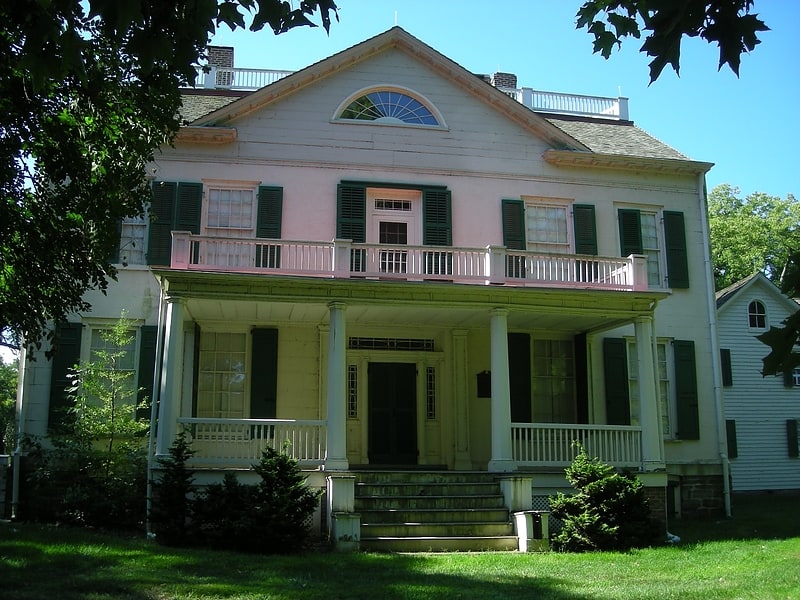
Buccleuch Mansion is located in Buccleuch Park in New Brunswick in Middlesex County, New Jersey, along the Raritan River.[8]
Address: 200 College Avenue, New Brunswick (New Brunswick)
Kirkpatrick Chapel
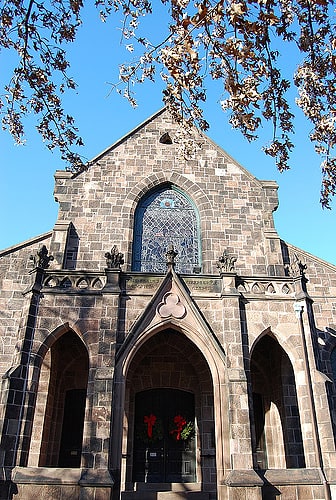
Chapel in New Brunswick, New Jersey. The Sophia Astley Kirkpatrick Memorial Chapel, known as Kirkpatrick Chapel, is the chapel to Rutgers, The State University of New Jersey and located on the university's main campus in New Brunswick, New Jersey in the United States. Kirkpatrick Chapel is among the university's oldest extant buildings, and one of six buildings located on a historic section of the university's College Avenue Campus in New Brunswick known as the Queens Campus. Built in 1872 when Rutgers was a small, private liberal arts college, the chapel was designed by architect Henry Janeway Hardenbergh at the beginning of his career. Hardenbergh, a native of New Brunswick, was the great-great-grandson of Rutgers' first president, the Rev. Jacob Rutsen Hardenbergh. It was the third of three projects that Hardenbergh designed for the college.
Kirkpatrick Chapel was named in honour of Sophia Astley Kirkpatrick. Kirkpatrick was the wife of Littleton Kirkpatrick, a local attorney and politician who was a member of the board of trustees of Rutgers College from 1841 until his death in 1859. When Sophia Kirkpatrick died in 1871, Rutgers was named as the residuary legatee of her estate. A bequest of $61,054.57 (2013: US$1,174,079.38) from her estate funded the construction of the chapel. According to Rutgers, this marked the first time in New Jersey history that an institution became a direct heir to an estate.
The chapel was designed in the High Victorian Gothic Revival style that was popular at the middle of the nineteenth century in the United States. Hardenbergh's design incorporated features common to fourteenth-century German and English Gothic churches. According to the New Jersey Historic Trust, the chapel's stained glass windows feature "some of the first opalescent and multicolored sheet glass manufactured in America." Four of the chapel's windows were created by the studios of Louis Comfort Tiffany. Kirkpatrick Chapel is a contributing property of the Queens Campus Historic District, which was added to the National Register of Historic Places on July 2, 1973.
For its first 30 years, the chapel was used as a college library and for holding daily chapel services. Although Rutgers was founded as a private college affiliated with the Dutch Reformed faith, today, it is a state university and nonsectarian. The chapel is available to students, alumni, and faculty of all faiths, and a variety of services are held throughout the academic term. It is also used for university events including convocation, concerts, alumni and faculty weddings, funerals, and lectures by prominent intellectuals and world leaders.[9]
Address: 81 Somerset St, 08901 New Brunswick (New Brunswick)
Cornelius Low House
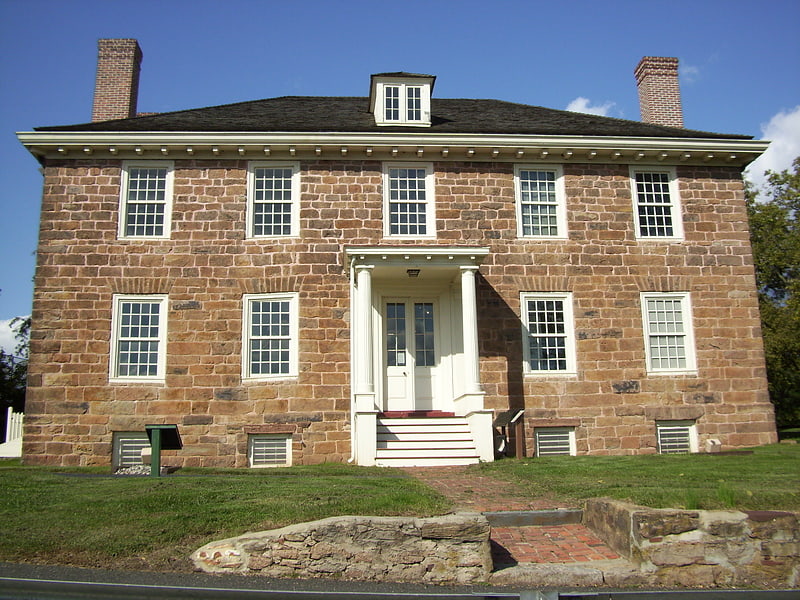
Museum in Piscataway, New Jersey. The Cornelius Low House is a Georgian manor in Piscataway, Middlesex County, New Jersey, United States, built in 1741 at Raritan Landing. The Cornelius Low House is listed on the New Jersey Register of Historic Places and National Register of Historic Places. The house currently holds the Cornelius Low House/Middlesex County Museum.[10]
Zimmerli Art Museum

Museum in New Brunswick, New Jersey. The Jane Voorhees Zimmerli Art Museum is located on the Voorhees Mall of the campus of Rutgers University in New Brunswick, New Jersey. The museum houses more than 60,000 works, including Russian and Soviet Nonconformist Art from the acclaimed Dodge Collection, American art from the eighteenth century to the present, and six centuries of European art with a particular focus on nineteenth-century French art. The museum also is noted for its holdings of works on paper, including prints, drawings, photographs, original illustrations for children's books, and rare books.[11]
Address: 71 Hamilton St, 08901-1248 New Brunswick (New Brunswick)
Elmwood Cemetery
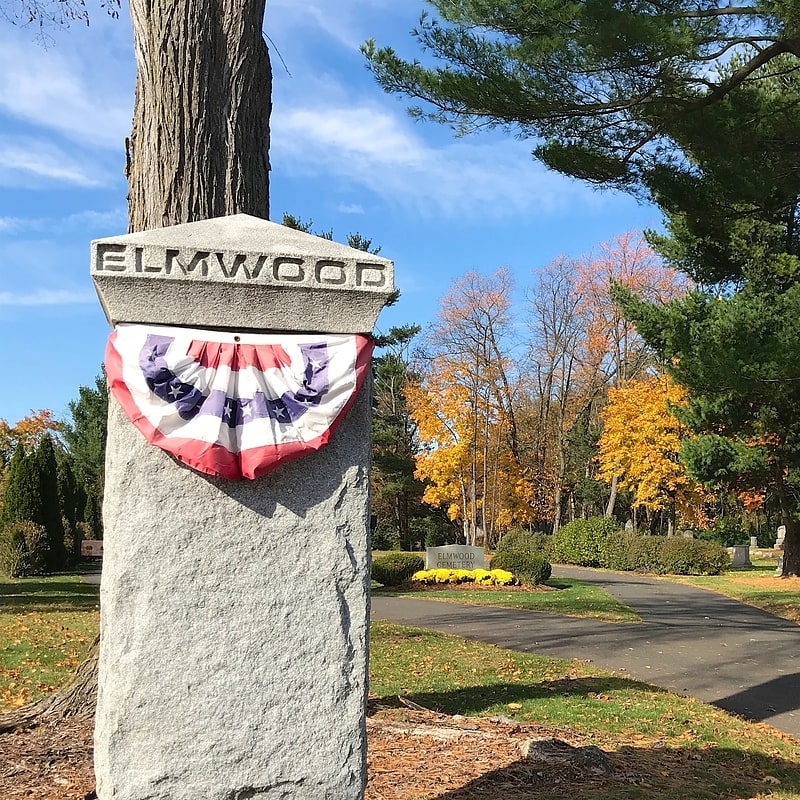
Cemetery in North Brunswick Township, New Jersey. The Elmwood Cemetery is located at 425 Georges Road in North Brunswick, Middlesex County, New Jersey. It borders New Brunswick, New Jersey. The cemetery was established in 1868.[12]
Address: 425 Georges Rd, New Brunswick
Mary Ellis grave
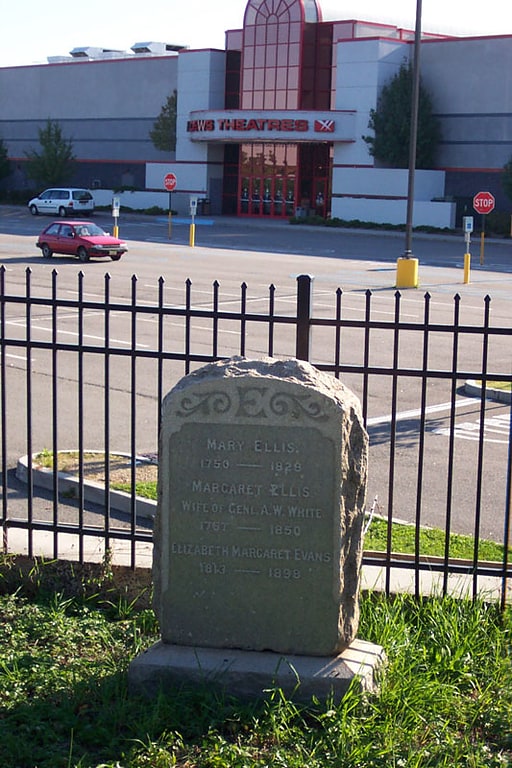
Cemetery in New Brunswick, New Jersey. The Mary Ellis grave is a grave located behind an AMC Theatre on U.S. Route 1 in New Brunswick, Middlesex County, New Jersey, United States. The granite gravestone is located on a 7-foot high stonework pyramid in the back parking lot. Seven relatives are also buried and marked on the grave itself.
Mary Ellis, a native of South Carolina, was a property owner and fierce feminist in New Brunswick, noted to even vote in city elections before the right for women to vote was passed. Living on Livingston Avenue, Ellis maintained a garden on her property until a local politician, James Schureman, took the land to build a street on it. In response, she posted a sign on the new Schureman Street calling it "Oppression Street". Historians believed that around 1813, Ellis moved from downtown New Brunswick to a secluded area known as Mount Hemlock, which overlooked the Raritan River. She lived there until her death in 1828. A niece of Ellis' respected her request to be buried on the land of which she lived overlooking the Raritan River.
The choice of Mount Hemlock for Ellis' residence and later burial site is part of local legend. Mary Ellis is believed to have met a sailor who she fell in love with, some day wanting to marry him. Once the sailor departed, she would return to the Raritan River on a knoll for a long time to keep a look out for his return, which would never occur. She continued to stand watch. However, historians have doubted the truth to this story noting her past as a person who would not waste that kind of time. The band Looking Glass, created of students at Rutgers University, wrote their 1972 song "Brandy (You're a Fine Girl)" with a story similar to Ellis' in terms of a bartender who finds someone she loves but the sailor preferring the sea as his true love. However, the members of the band denied there was any connection between the Ellis story and the song's lyrics.
By June 1956, the gravestone had been knocked over into the grounds below, and remained in that location for several years. John E. Burke, who had purchased the property in 1943 and then ran the Raritan Playland Amusement Park on the site, wanted to relocate the graves and gravestone, but declined once he learned that he would be required to contact and obtain written permission from all the families of those buried there before such a move would be permitted.
In 1965, with the construction of the Great Eastern Department Store on the site of her former residence, the company constructed a protective wall along the burial site and the toppled gravestone. This new construction created a 20-foot (6.1 m) pit in the parking lot, which would soon attract debris and littering. However, by 1980, Ray Travis and the son of Burke, operating the site as the Route 1 Flea Market since 1975, felt it was time to replace the concrete pit with dirt and move the granite gravestone to ground level. Several local historians were upset by the decision to do this as they were unaware that the move was meant to help preserve, not destroy the graves. Travis spent more than $1,000 (1980 USD) for eleven truckloads of dirt in order to fill in the fenced grave pit and that he had also planned to landscape the area.
On August 16, 1980, a float was run during the Raritan River Festival, commemorating the impact of Mary Ellis in New Brunswick history. Once the Route 1 Flea Market was razed and replaced with a Loews Theatre, the parking lot was re-graded, resulting in the gravestone towering over the parking lot.[13]
Address: 17 US Highway 1, 08901 New Brunswick (New Brunswick)
Queens Campus
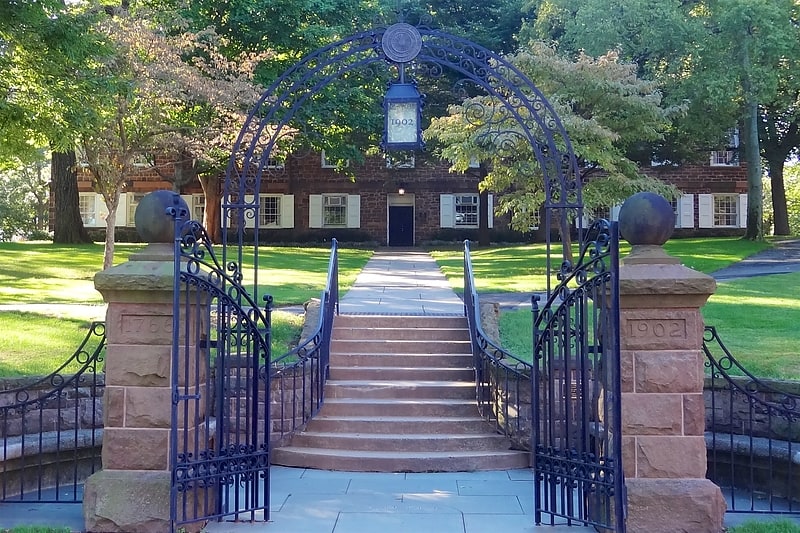
The Queens Campus or Old Queens Campus is a historic section of the College Avenue Campus of Rutgers, The State University of New Jersey in New Brunswick, New Jersey, in the United States.
The Queens Campus spans one city block on a hilltop overlooking the Raritan River. In 1807, the heirs of John Parker of Perth Amboy led by James Parker, Jr. a prominent local merchant and political figure, donated a six-acre apple orchard to the trustees of Queen's College and its grammar school. The college—which was renamed Rutgers College in 1825—built its first building, Old Queens, from 1809 to 1823. Old Queens was used for instruction, student chapel services, and housed members of the college's faculty. In the institution's early years, the building housed the college, its grammar school (until 1830), and the New Brunswick Theological Seminary (until 1856).
By the end of the nineteenth century, the Queens Campus contained seven buildings designed by architects John McComb, Jr. Nicholas Wyckoff, Williard Smith, Henry Janeway Hardenbergh, and Van Campen Taylor. These buildings were erected to accommodate the small but expanding liberal arts college's classroom instruction, student activities, faculty offices, chapel, library, and housing into the middle of the twentieth century. Six buildings remain and are used to accommodate the university's core administrative offices, a geological museum, the college chapel, and a former astronomical observatory that is no longer used. The Queens Campus was included on the New Jersey Register of Historic Places and National Register of Historic Places in 1973. The oldest building, Old Queens, was designated as a national landmark in 1976.[14]
Raritan River Bridge
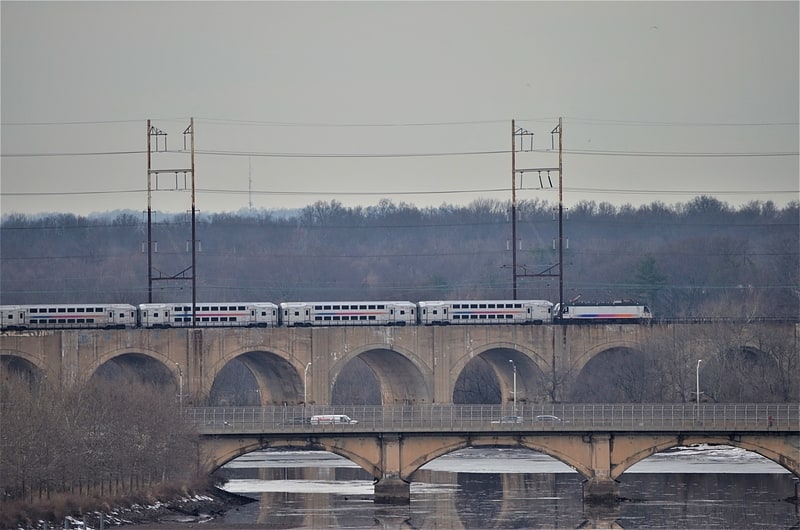
Arch bridge in New Brunswick, New Jersey. The Raritan River Bridge is a rail bridge over the Raritan River, in New Brunswick and Highland Park in Middlesex County, New Jersey, U.S. The arch bridge carries the Northeast Corridor at MP 30.92. It used by Amtrak, including Northeast Regional service, and New Jersey Transit's Northeast Corridor Line. It also crosses over New Jersey Route 18 and the East Coast Greenway.
The bridge was constructed in 1903 by the Pennsylvania Railroad (PRR). It consists of 21 spans of stone arches, the clear spans varying from 51 feet to 72 feet each and has a total length of 1,428 feet (435 m). The line was electrified by 1933. and between 1948-1950 the bridge was encased in concrete.
The bridge was documented by the Historic American Engineering Record in 1977. It is contributing property of the unlisted Pennsylvania Railroad New York to Philadelphia Historic District (ID#4568), designated in 2002 by the New Jersey State Historic Preservation Office.[15]
Donald and Morris Goodkind Bridges

Concrete bridge in New Brunswick, New Jersey. The Donald and Morris Goodkind Bridges are a pair of bridges on U.S. Route 1 in the U.S. state of New Jersey. The bridges cross the Raritan River, connecting Edison on the north bank with New Brunswick on the south.
The northbound span, a concrete arch bridge, is named after its designer, New Jersey Highway Department engineer Morris Goodkind. This span was completed in 1929 and reflects the Art Deco styling of the time. Along both sides of the bridge, there are historical plaques that read of the site's significance to both the Lenape Indians and the American colonists. Originally named the College Bridge, it was renamed the Morris Goodkind Bridge on April 25, 1969. Morris had a son, Donald, who also became an architect and engineer for the New Jersey Department of Transportation. Donald designed the southbound bridge, a steel span bridge built in 1974, which was named after him in 2004.[16]
Address: Route 1, New Brunswick
Basilone Memorial Bridge
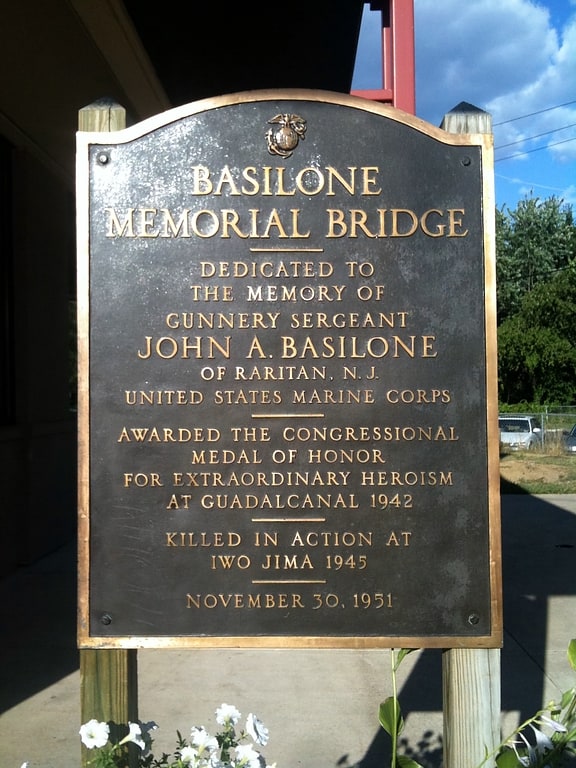
Bridge in New Brunswick, New Jersey. The Basilone Memorial Bridge is a bridge on the New Jersey Turnpike in the U.S. state of New Jersey spanning the Raritan River. The bridge connects Edison on the north with New Brunswick on the south.
The bridge, which opened along with the Turnpike in 1951 is named for John Basilone, a World War II recipient of the Medal of Honor who grew up in nearby Raritan, New Jersey.
Memorials for the bridge can be found at both the northbound Joyce Kilmer Travel Plaza and southbound Thomas Edison Travel Plaza.[17]
Elmer B. Boyd Park
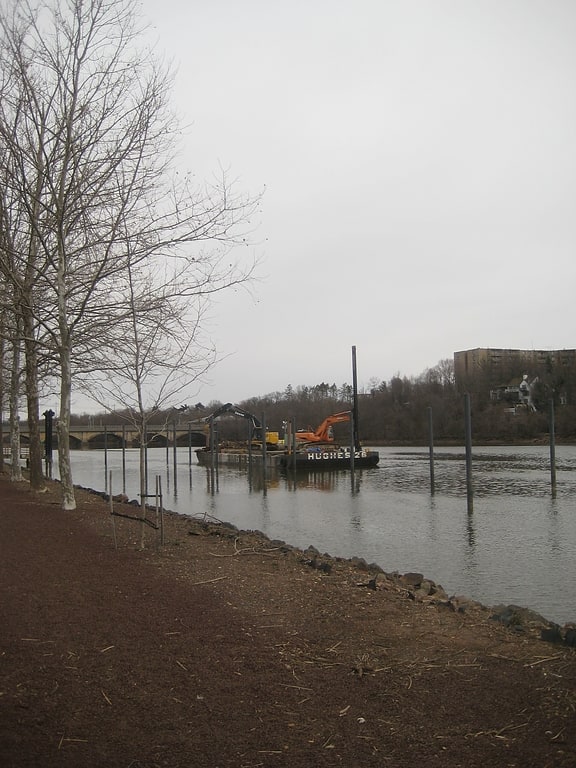
Park in New Brunswick, New Jersey. Elmer B. Boyd Memorial Park is a 20-acre municipal park running along the Raritan River in New Brunswick, New Jersey. Named after a news publisher, the park was rehabilitated and reopened in 1999 at a cost of $11 million.
The park is the location for the New Brunswick Landing, a floating dock with 24 slips available for boaters. It is part of the Middlesex County Park System.[18]
Landing Lane Bridge
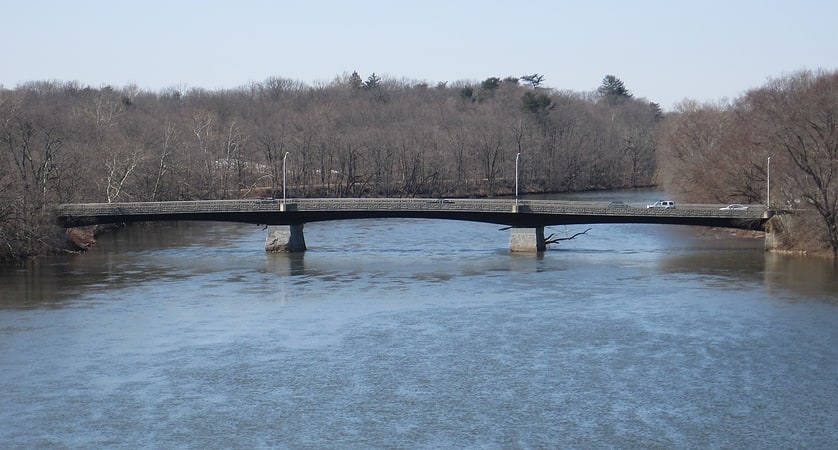
Bridge in New Brunswick, New Jersey. Landing Lane Bridge is part of County Route 609 and spans the Raritan River and the Delaware and Raritan Canal in New Jersey. The two lane bridge connects Piscataway to the north with New Brunswick to the south. The approaching roadways on both sides are known as "Landing Lane." The Delaware and Raritan Canal State Park and towpath is accessible from the bridge.[19]
Address: Landing Ln, New Brunswick
George Street Playhouse

Theatre company. George Street Playhouse is a theatre company in New Brunswick, New Jersey in the city's Civic Square government and theatre district. It one of the state's preeminent professional theatres committed to the production of new and established plays.
Under the leadership of Artistic Director David Saint and Managing Director Kelly Ryman, George Street Playhouse is a nationally recognized theatre, presenting an acclaimed mainstage season while providing an artistic home for established and emerging theatre artists. Founded in 1974 by Eric Krebs, the Playhouse has been represented by numerous productions both on and off-Broadway – recent productions include the world premiere of The Trial of Donna Caine by Walter Anderson, Little Girl Blue: The Nina Simone Musical, a revised version of I Love You, You're Perfect Now Change, An Act of God with Kathleen Turner, American Son by Christopher Demos-Brown, Lewis Black's One Slight Hitch, Gettin' The Band Back Together, and Joe DiPetro's Clever Little Lies. The Tony Award and Pulitzer Prize-winning play Proof by David Auburn, was developed at GSP during the 1999 Next Stage Series of new plays. In addition to its mainstage season, GSP's Touring Theatre features issue-oriented productions that tours to more than 250 schools in the tri-state area, and are seen by more than 30,000 students annually.
When founded, the theatre was located on George Street and moved later to its current location on Livingston Avenue. In 2017, the playhouse moved to an interim location in the former Agricultural Museum on Cook Campus at Rutgers University In the fall of 2019 George Street Playhouse moved back to the Livingston Ave location into a new mixed-use building, the New Brunswick Performing Arts Center.[20]
Address: 9 Livingston Ave, 08901-1971 New Brunswick (New Brunswick)